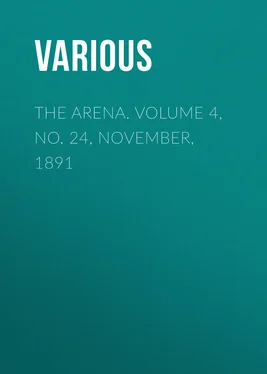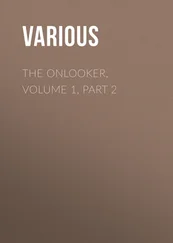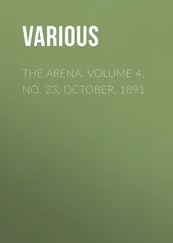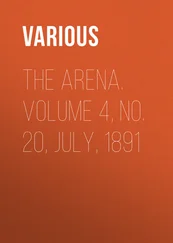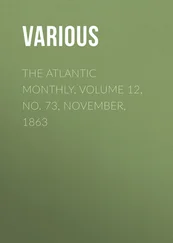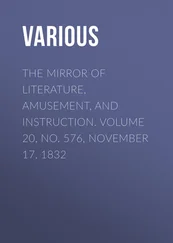Various - The Arena. Volume 4, No. 24, November, 1891
Здесь есть возможность читать онлайн «Various - The Arena. Volume 4, No. 24, November, 1891» — ознакомительный отрывок электронной книги совершенно бесплатно, а после прочтения отрывка купить полную версию. В некоторых случаях можно слушать аудио, скачать через торрент в формате fb2 и присутствует краткое содержание. Жанр: foreign_antique, periodic, foreign_edu, на английском языке. Описание произведения, (предисловие) а так же отзывы посетителей доступны на портале библиотеки ЛибКат.
- Название:The Arena. Volume 4, No. 24, November, 1891
- Автор:
- Жанр:
- Год:неизвестен
- ISBN:нет данных
- Рейтинг книги:4 / 5. Голосов: 1
-
Избранное:Добавить в избранное
- Отзывы:
-
Ваша оценка:
- 80
- 1
- 2
- 3
- 4
- 5
The Arena. Volume 4, No. 24, November, 1891: краткое содержание, описание и аннотация
Предлагаем к чтению аннотацию, описание, краткое содержание или предисловие (зависит от того, что написал сам автор книги «The Arena. Volume 4, No. 24, November, 1891»). Если вы не нашли необходимую информацию о книге — напишите в комментариях, мы постараемся отыскать её.
The Arena. Volume 4, No. 24, November, 1891 — читать онлайн ознакомительный отрывок
Ниже представлен текст книги, разбитый по страницам. Система сохранения места последней прочитанной страницы, позволяет с удобством читать онлайн бесплатно книгу «The Arena. Volume 4, No. 24, November, 1891», без необходимости каждый раз заново искать на чём Вы остановились. Поставьте закладку, и сможете в любой момент перейти на страницу, на которой закончили чтение.
Интервал:
Закладка:
I will give first a table showing comparative prices before and after the tariff of 1890 of some of the cotton fabrics most commonly used. They are all protected industries and ought to have been advanced in price if any part of the assertions made by the advocates of free trade during the last campaign were true.
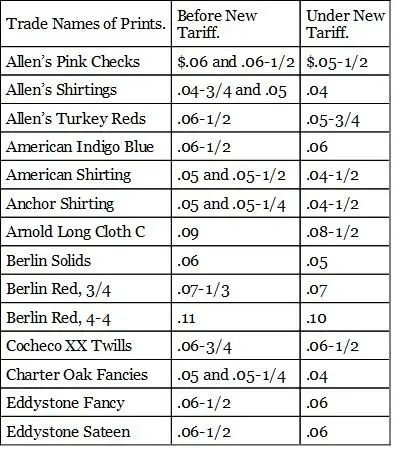
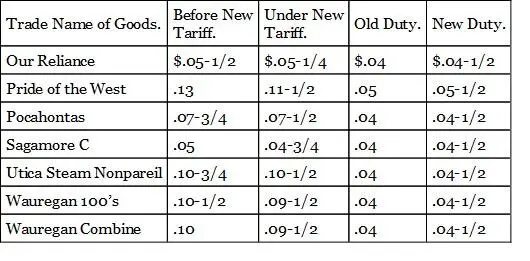
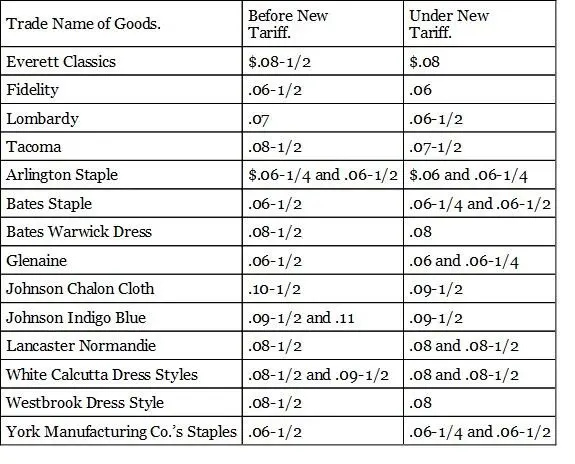
I give now a table comparing the market quotations for 1890 of the articles which enter most largely into the cost of living, with those for the same period in 1891:—
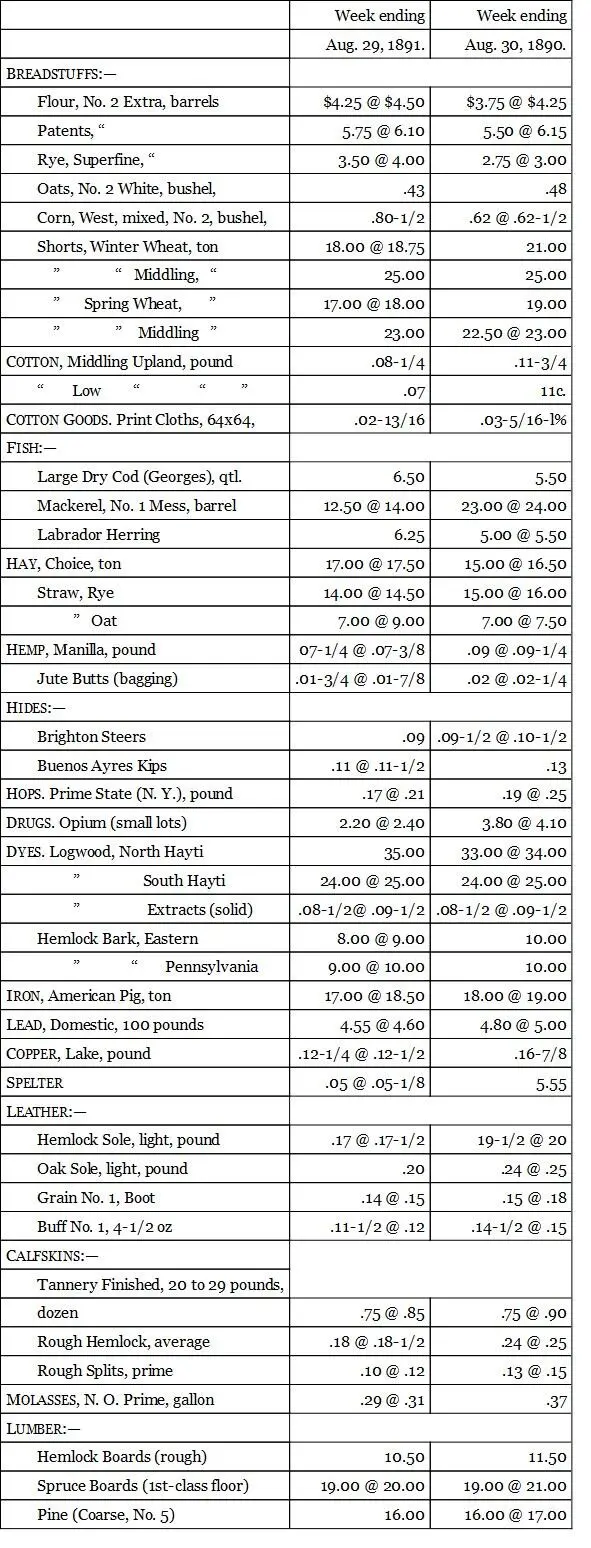
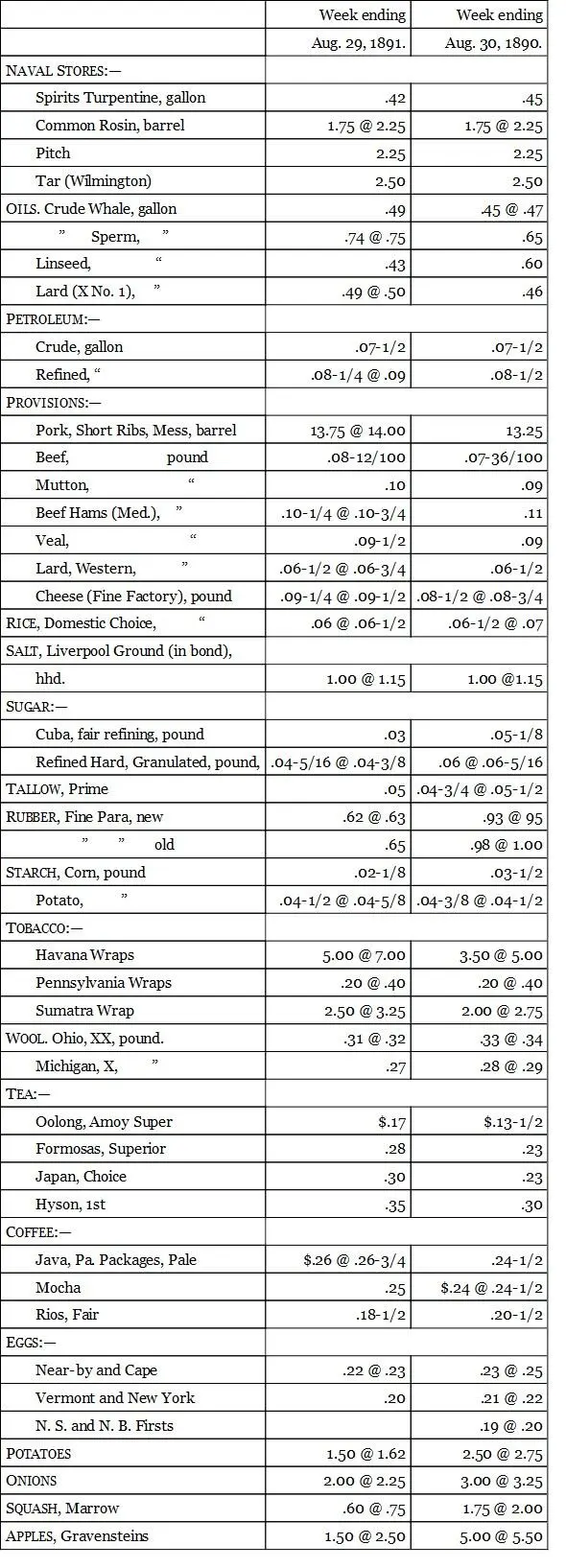
If the articles given in the foregoing table be classified we find the following results as to the rise and fall of prices before and after the tariff of 1890.
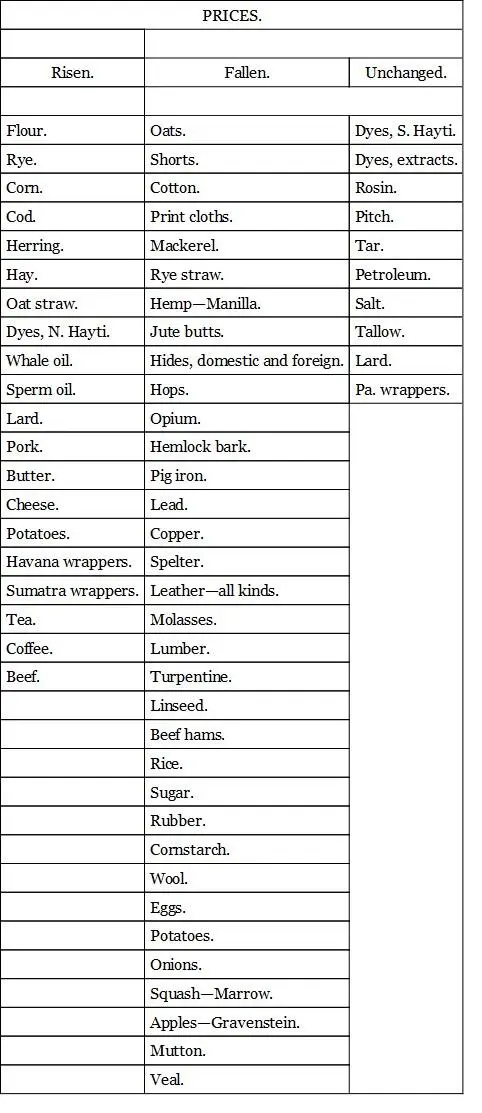
From these tables it is obvious that there has been, in the first place, no general rise of prices such as was confidently predicted by the panic-mongers of last year. On the contrary, the large majority of prices show a downward tendency. But more important than this is the fact made obvious by these tables that the price of the protected product has not risen. The foreign goods have advanced in some instances and been shut out in consequence, but domestic goods have taken their places, the price being kept down by domestic competition. In a word these tables prove that except for the enormous reduction in the cost of sugar, the new tariff has had but slight effect if any on the course of prices of the necessaries of life, and that the statements of the free traders as to a general rise of prices was entirely false.
The following extract is from a letter from one of the largest wholesale clothing firms in Boston. It tells its own story:—
“In reply to yours of the 10th inst., would say that we sold clothing in every grade in August, 1891, at fully 10 per cent. less in prices than in August, 1886; for instance, a cassimere suit sold then for $12.00 which we sell now for $10.50, and one sold for $13.50 and we sell the same now for $12.00. An overcoat sold then for $11.50 which we sell now for $10.00. Another grade sold then for $16.50 and sells for $15.00 now. This difference will run through all grades in proportion to prices. The difference in prices between August, 1890, and ‘91, is very little, if any; less rather than more in ‘91.”
As to the development of manufacturing under the McKinley bill I will quote first the opinion of a disinterested witness. The British Consular General at New York, in his report of May 8, 1891, speaks as follows:—
“Influenced by the new and higher duties afforded for the benefit of American manufacturing interests, new life has been imparted to the cotton, worsted, woollen, and knit underwear industry. Everywhere, especially in the Southern States, new textile mills have been going up with surprising activity, and all the old corporations have been operated on full time….
“As a rule, all the cotton mills have had a year of unusual activity. The production has been of larger volume than in any previous year, and the goods have found a ready sale generally but at comparatively low prices, considering the high prices which prevailed during the first six months of the year for cotton. Market prices, except in a few cases, did not vary with the price of cotton. Opening generally at low rates, cotton goods have been steady, the home and export demand being sufficient to absorb the supply of all standard and staple makers of brown, bleached, and colored goods, if we except printing cloths and calicoes….
“The worsted goods industry has been marked by fresh life since the new tariff has, to a great extent, cut off the importation of the lowest grades of such goods. All the old factories have started up, and are making goods on safe orders; and new mills are being erected by European and British capitalists with a view to manufacturing a finer class of dress goods, etc., than ever before has been produced in this country. The woollen goods industry, apart from ladies’ cloths, does not show any perceptible signs of improvement, but keeps on a slow, steady gait, apart from carpetings and woollen underwear. Both of the latter industries have been unusually busy during the last six months at fairly profitable prices.”
To give a complete list of the new industries started since the passage of the McKinley bill would be impossible, and would occupy more space than The Arena could spare. I give, therefore, a partial list compiled from the Boston Commercial Bulletin , and covering only the first three months after the passage of the law, that is, from Oct. 1, 1890. These are the months most unfavorable to the bill, but the statistics show what the growth of new and old industries has been under the tariff of 1890 in three months, and indicate what the future increase is likely to be.
Shoe factory at Portsmouth, Va.
Tannery and horse collar manufactory at Demorest, Ga.
Shoe factory building by the town of Ayer to cost $15,000.
White Bros, new tannery at Lowell for finishing fine upper leather.
Towle’s new shoe factory at Northwood, N. H.
New shoe factory at Natick, Mass.
New shoe factory at Beverly, Mass.
New shoe factory at Salisbury, N. C.
Voltaire Electric Shoe Co., of Manchester, N. H. (Capital, $50,000.)
New factory at Ellsworth, Me.
New factory at Sherman, Me.
New factory at Whitman, Mass., for Commonwealth Shoe Co.
New factory at East Pepperell, Mass. (Employs over 700 hands.)
Manhattan Rubber Shoe Co., at New York. (Capital, $50,000.)
Crocker Harness Co., of Tisbury, Mass. (Capital, $77,000.)
Mutual Land & Mfg. Co., at Durham, N. C. (Capital, $280,000.)
Stock company (capital, $250,000) to erect cotton mill, at Fort Worth, Texas.
Cabot Cotton Mfg. Co., at Brunswick, Me. (70,000 spindles.)
Shirt factory at Milford, Del. (To employ 30 women.)
New mill at New Bedford, Mass., for the manufacture of fine yarn, on account of the high tariff on this grade of goods.
New mill at Dallas, Texas. (15,000 spindles.)
New cotton mill at Monroe, La. (Capital, $200,000.)
New mill at Austin, Texas, to cost $500,000.
Cotton factory at New Iberia, Ky.
Stock company (capital, $500,000) at Atlanta, Ga., to work the fibre of the cotton stalk into warp for cotton bales.
New cotton factory at Abbeville, S. C.
New cotton factory at Summit, Miss.
Jean pants and cotton sack factory, at Louisiana State Penitentiary.
New cotton mill at Moosup, Conn.
New cotton mill at Wolfboro, N. H. (Capital, $800,000.)
Bagging mills at Sherman, Texas.
Cotton batting factory at Columbia, S. C. (Capital, $40,000.)
Читать дальшеИнтервал:
Закладка:
Похожие книги на «The Arena. Volume 4, No. 24, November, 1891»
Представляем Вашему вниманию похожие книги на «The Arena. Volume 4, No. 24, November, 1891» списком для выбора. Мы отобрали схожую по названию и смыслу литературу в надежде предоставить читателям больше вариантов отыскать новые, интересные, ещё непрочитанные произведения.
Обсуждение, отзывы о книге «The Arena. Volume 4, No. 24, November, 1891» и просто собственные мнения читателей. Оставьте ваши комментарии, напишите, что Вы думаете о произведении, его смысле или главных героях. Укажите что конкретно понравилось, а что нет, и почему Вы так считаете.
